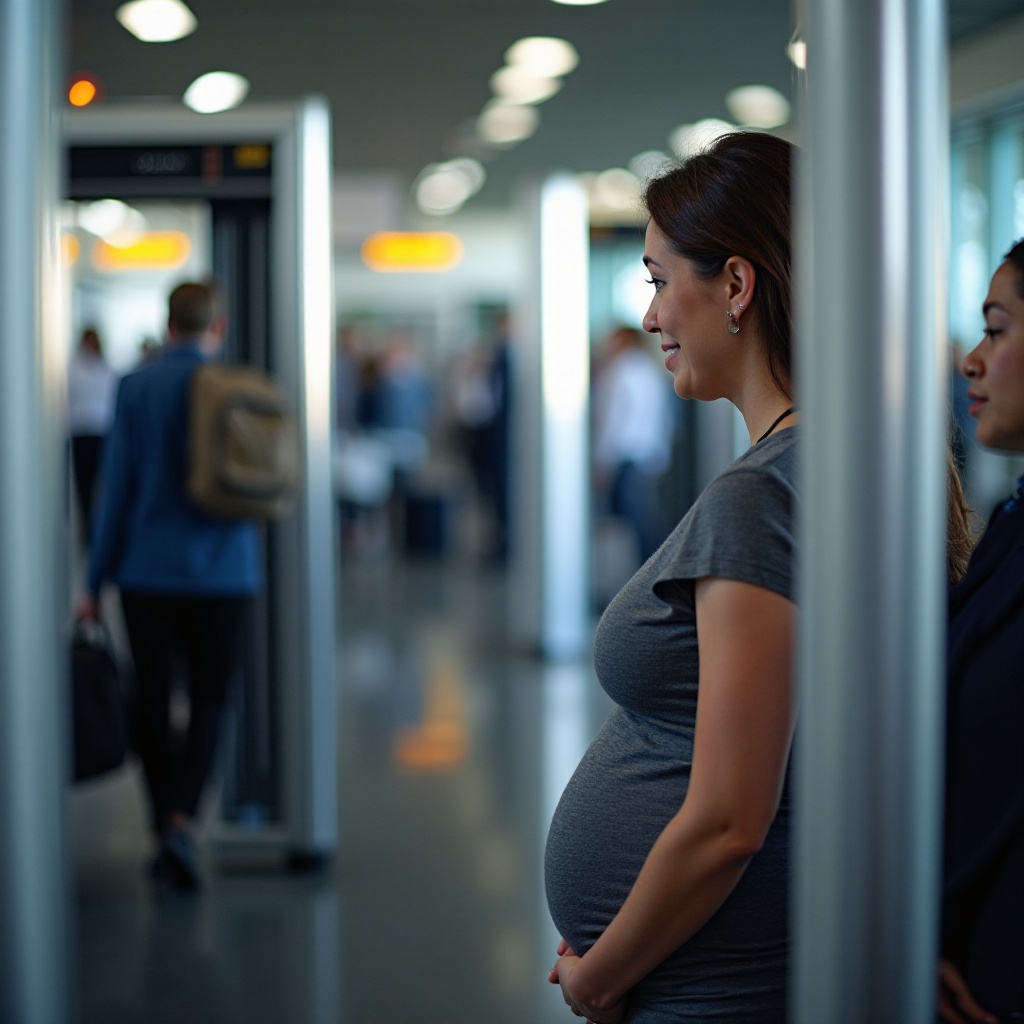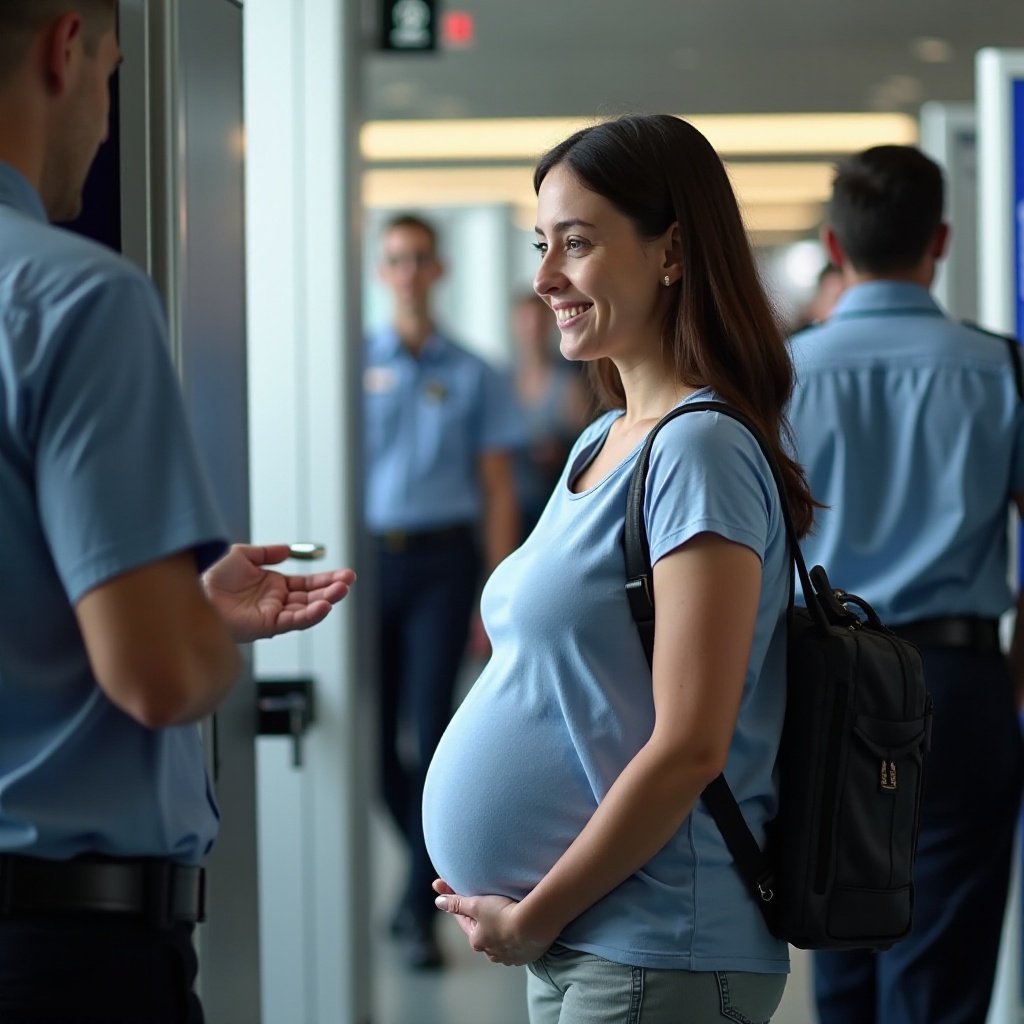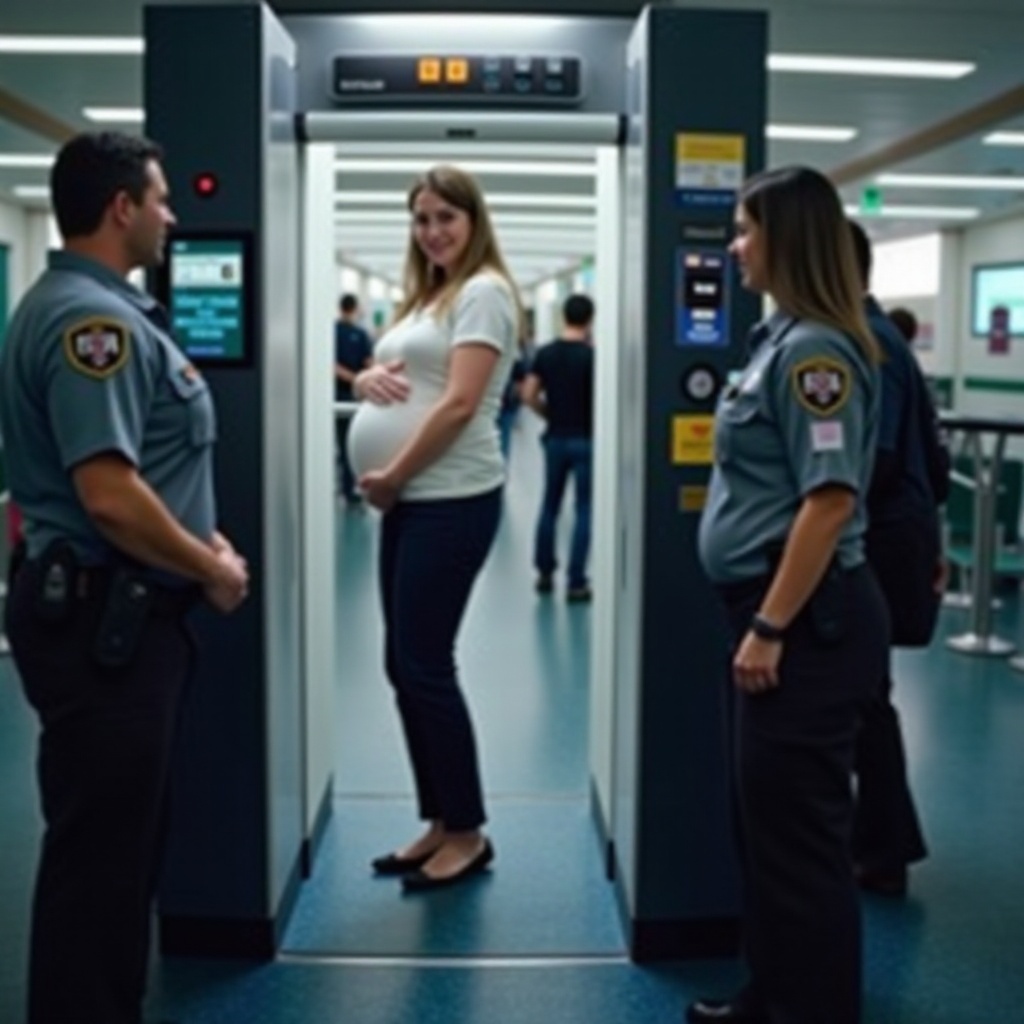Introduction
Traveling while pregnant often comes with a host of questions and considerations, one of which is the safety of TSA scanners. Airports use these scanners to ensure security, but many pregnant women worry about the potential impact on their unborn babies. This blog aims to provide a comprehensive look at the safety of TSA scanners for pregnant travelers, backed by scientific evidence and expert opinions. We’ll also explore alternatives for those who prefer to avoid these scanners and offer useful tips for traveling comfortably during pregnancy.

Understanding TSA Scanners
How TSA Scanners Work
TSA scanners are used at airports to detect hidden objects on passengers’ bodies. These scanners, predominantly found at U.S. airports, operate using two primary technologies: backscatter X-ray and millimeter wave scanning. Each type uses different methods to ensure security.
Types of TSA Scanners
Backscatter X-ray
Backscatter X-ray scanners use low-level X-rays that bounce off the skin to create an image. This technology helps identify hidden items under clothing. Despite the use of X-rays, the radiation exposure from these scanners is considerably low.
Millimeter Wave
Millimeter wave scanners, the more common type at airports now, use non-ionizing radiofrequency waves to detect objects. These waves pass over the body and are considered safe because they don’t have enough energy to remove tightly bound electrons from atoms or molecules, distinguishing them from ionizing radiation like X-rays.

Radiation and Pregnancy: Key Considerations
General Information on Radiation Exposure
Radiation exposure is a concern for many, especially pregnant women. Radiation is energy in the form of waves or particles, and it’s measured in sieverts (Sv). The effects of radiation depend largely on the dose received.
Effects of Radiation on Pregnancy
During pregnancy, the developing fetus is most susceptible to radiation, particularly during the early stages of development. High levels of radiation exposure can lead to birth defects, developmental disabilities, and increased cancer risk. However, it’s important to note that not all forms of radiation pose a significant risk.
Comparing Radiation Levels: TSA Scanners vs. Other Sources
The radiation dose from a backscatter X-ray scanner is extremely low—approximately 0.1 microsieverts per scan. In comparison, an average person receives about 3,000 microsieverts per year from natural background radiation. Millimeter wave scanners use non-ionizing radiation, which doesn’t carry the same risks as ionizing radiation. Thus, the exposure from TSA scanners is negligible compared to other everyday sources of radiation.
Scientific Evidence on TSA Scanner Safety for Pregnancy
Studies and Research Findings
Numerous studies have been conducted to assess the safety of TSA scanners, especially for pregnant women. Research indicates that the radiation levels emitted by backscatter X-ray scanners are exceedingly low and fall well within safe limits. The consensus is that the exposure from a scan is less than what you receive during two minutes of flight.
Opinions from Health Organizations
Health organizations, including the American College of Obstetricians and Gynecologists (ACOG) and the Health Physics Society, agree that the radiation from TSA scanners is too minimal to cause any harm to a pregnant woman or her baby. They assert that both backscatter and millimeter wave scanners are safe for use during pregnancy.
Comparing TSA Scanner Safety Standards
TSA scanners comply with safety standards set by international bodies, such as the Health Physics Society and the U.S. Environmental Protection Agency (EPA). These standards ensure that the radiation dose is kept far below harmful levels, providing an extra layer of reassurance.

Alternatives and Precautions for Pregnant Travelers
Requesting a Pat-Down
For pregnant travelers who still feel uncomfortable going through TSA scanners, requesting a pat-down is always an option. Pat-downs are performed by a TSA officer of the same gender and are conducted in a private area if requested.
Communicating with TSA Agents
Communicating your concerns to TSA agents can make the screening process smoother. Simply inform the officer that you are pregnant and would prefer not to go through the scanner. They are required by policy to respect your request and provide an alternative screening method.
Tips for Pregnant Travelers at the Airport
Planning Ahead
- Check Guidelines: Before your trip, review the TSA guidelines for pregnant travelers so you know your rights and options.
- Stay Hydrated: Keep a water bottle handy and drink plenty of fluids to stay hydrated during your journey.
Reducing Travel Stress
- Arrive Early: Giving yourself extra time can reduce travel stress, allowing you to navigate security checks without feeling rushed.
- Comfort Items: Bring comfort items like a travel pillow or a light blanket. These can make your time in the airport much more comfortable.
Conclusion
TSA scanners, whether backscatter X-ray or millimeter wave, are considered safe for pregnant travelers. The radiation exposure is significantly low and well within international safety standards. However, alternatives such as pat-downs are available for those who prefer not to take any chances. By planning ahead and communicating clearly with TSA agents, pregnant travelers can ensure a stress-free and safe airport experience.
Frequently Asked Questions
Can I request an alternative to the TSA scanners if I am pregnant?
Yes, you can request a pat-down from a TSA officer instead of going through a scanner.
Do TSA scanners increase the risk to my baby?
No, TSA scanners emit very low levels of radiation, which are not harmful to you or your baby.
What should I do if I feel uncomfortable going through a TSA scanner while pregnant?
If you feel uncomfortable, inform the TSA agent and request a pat-down as an alternative.